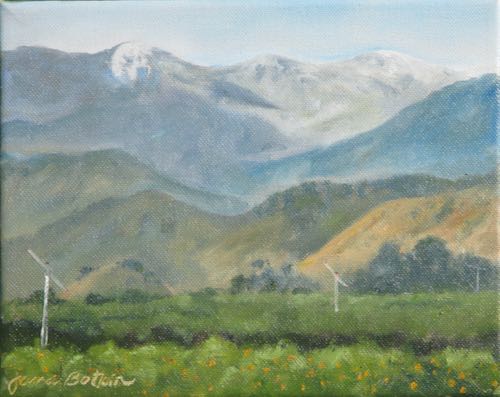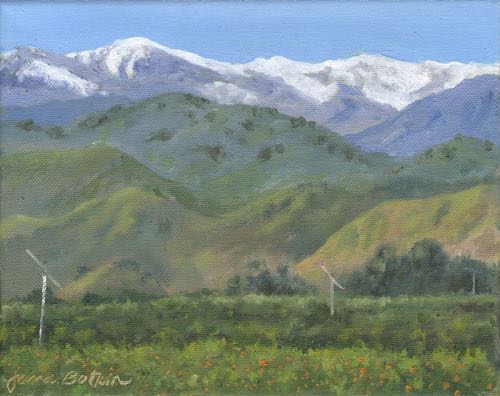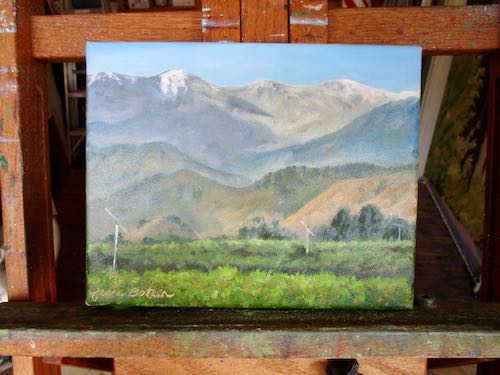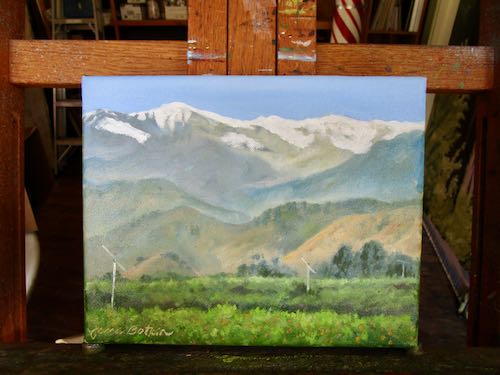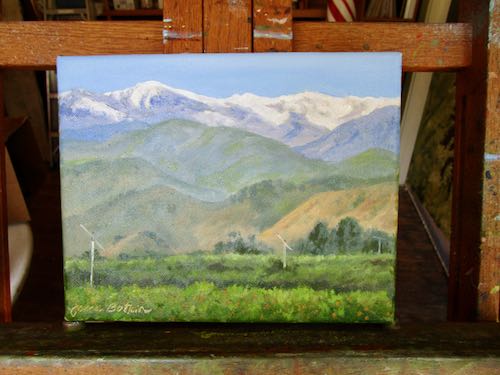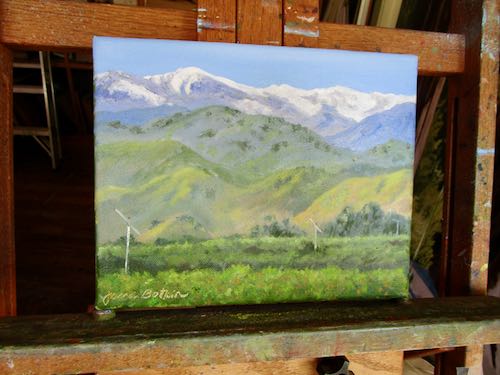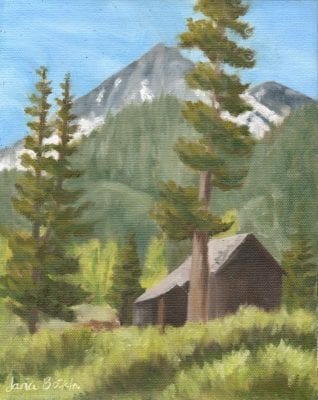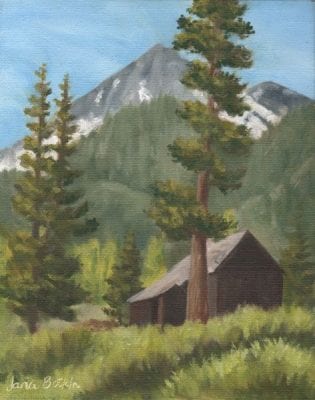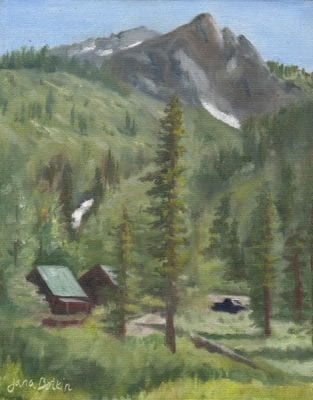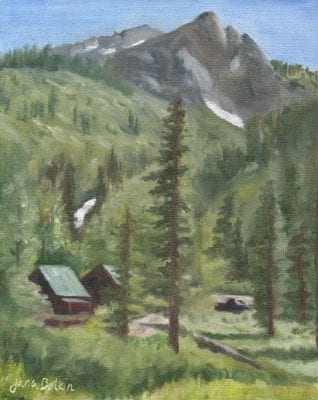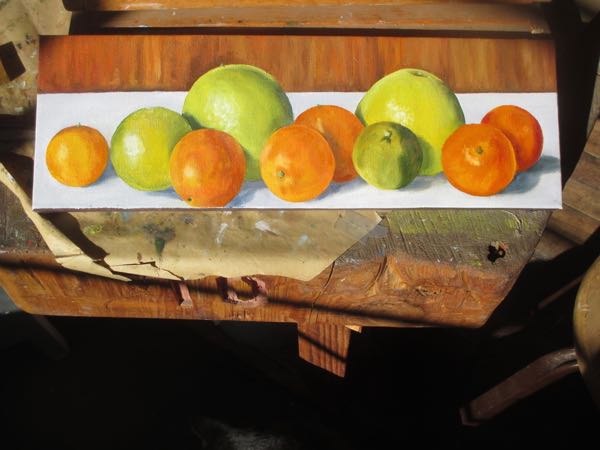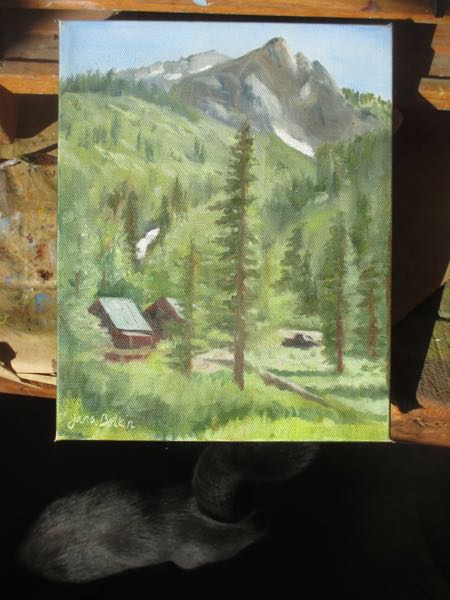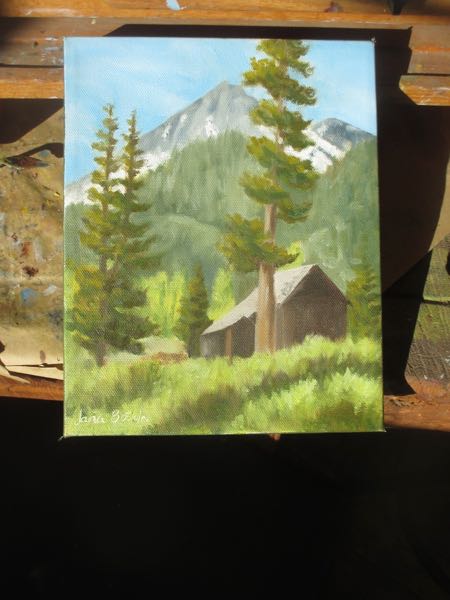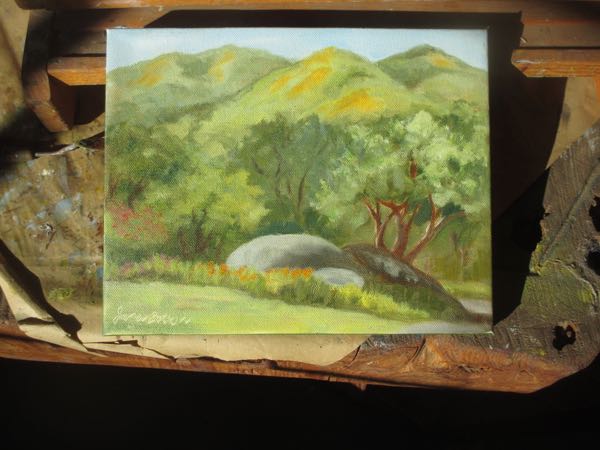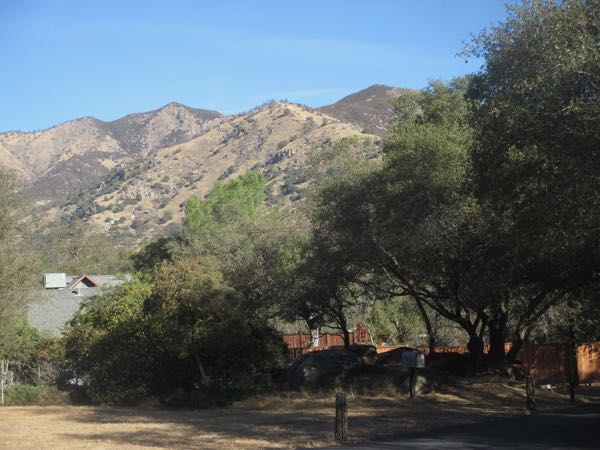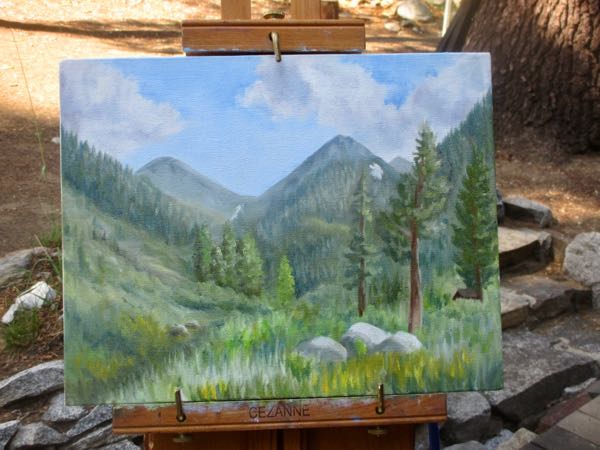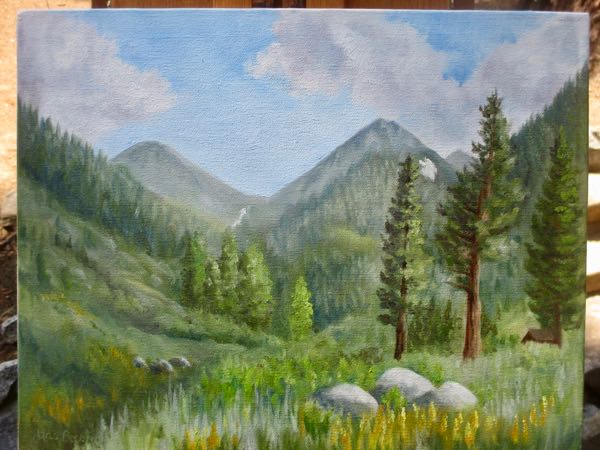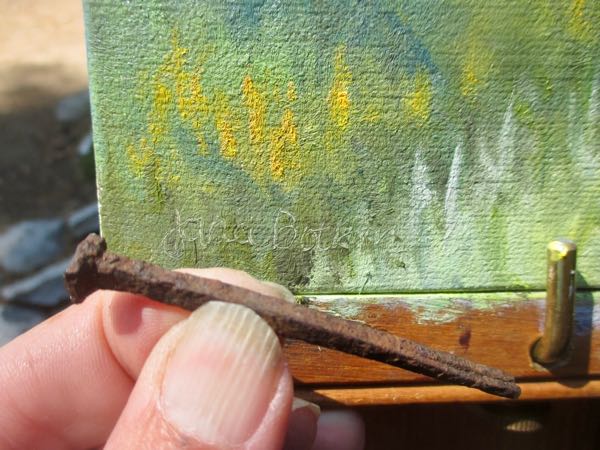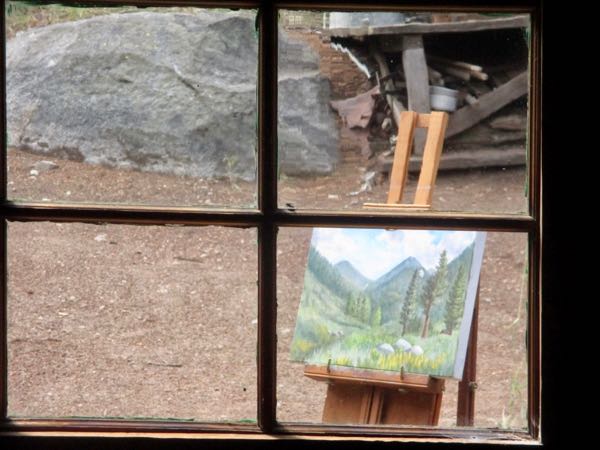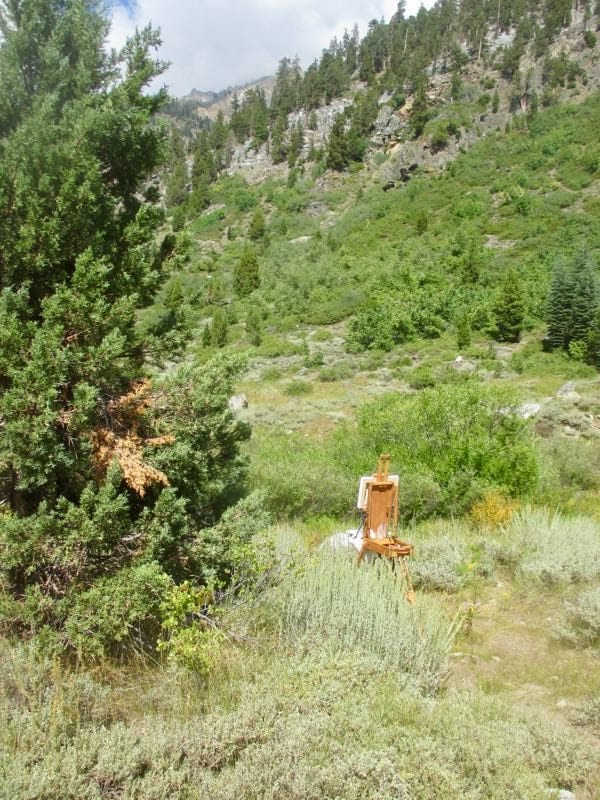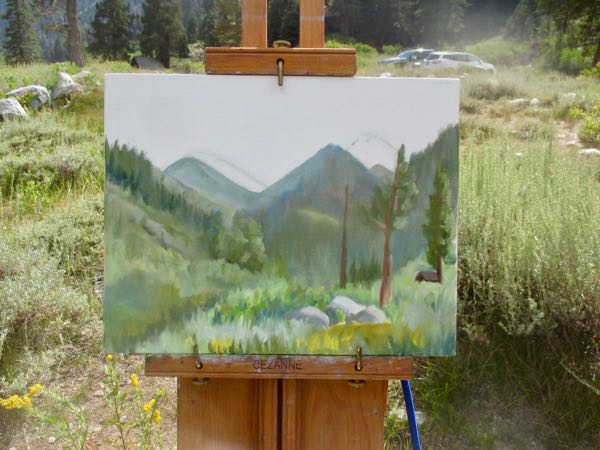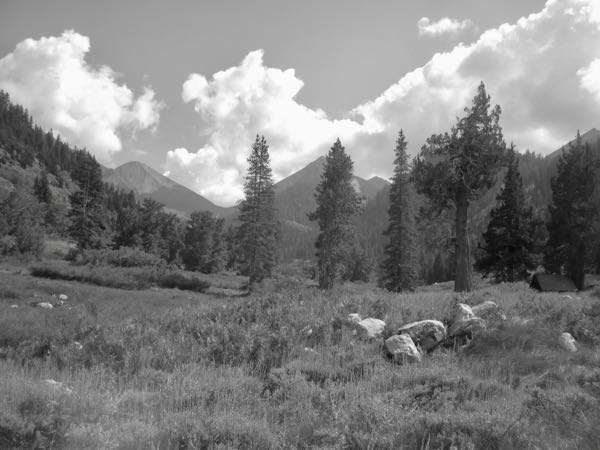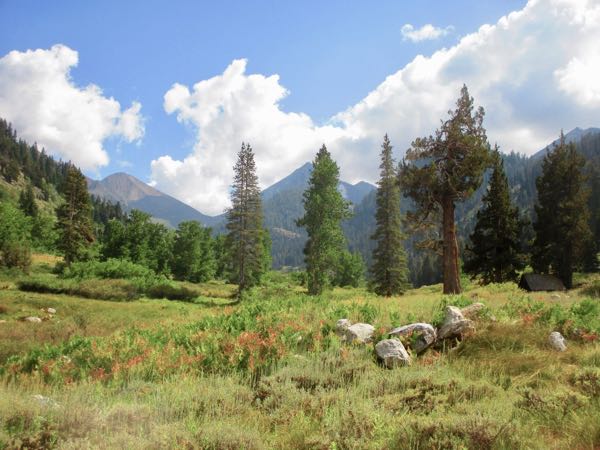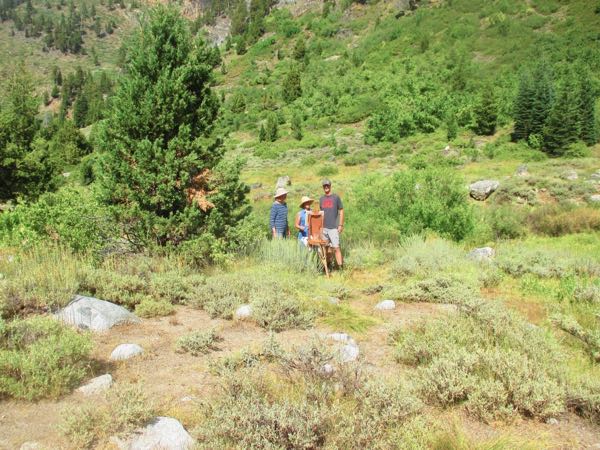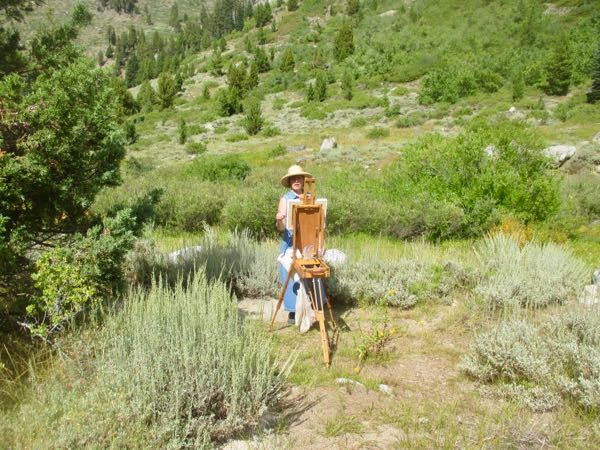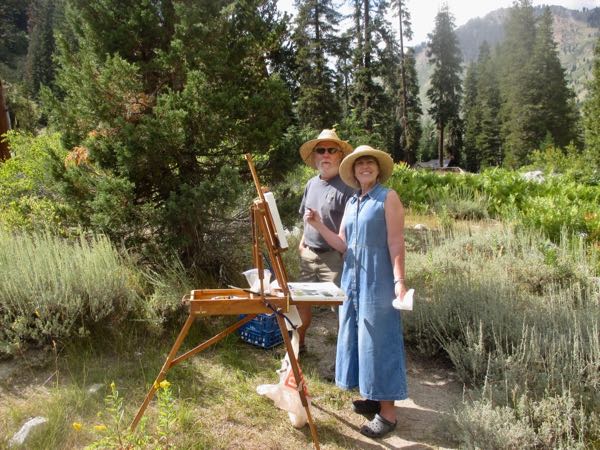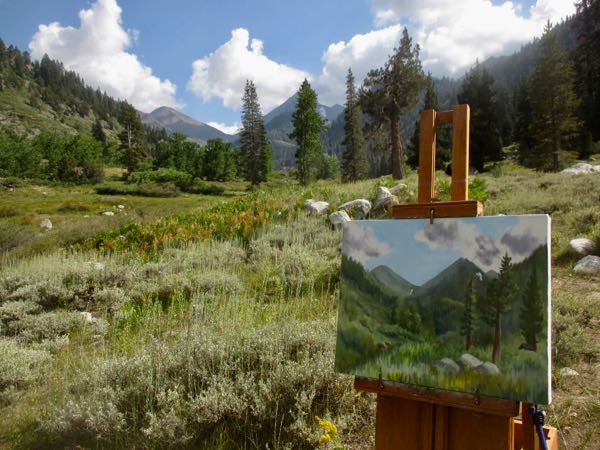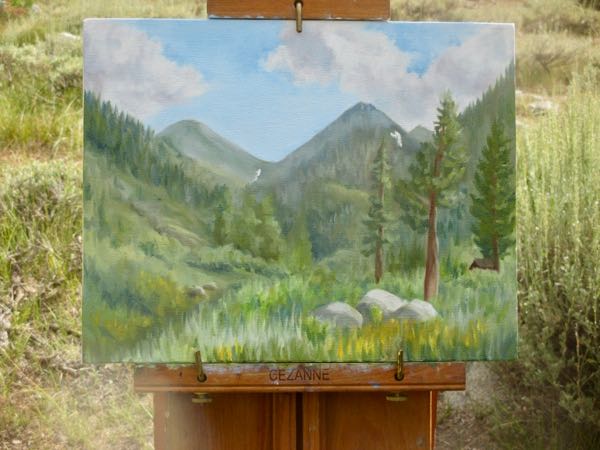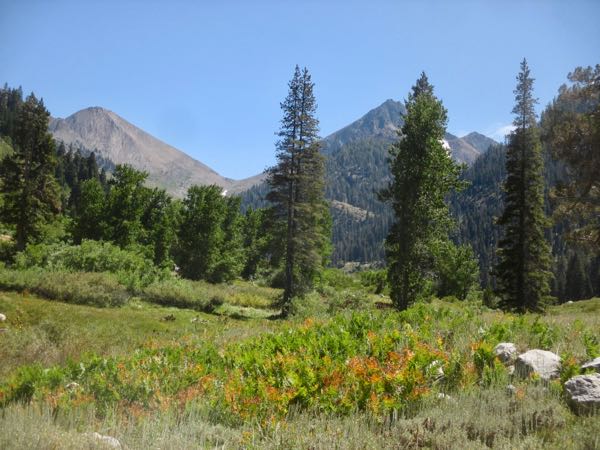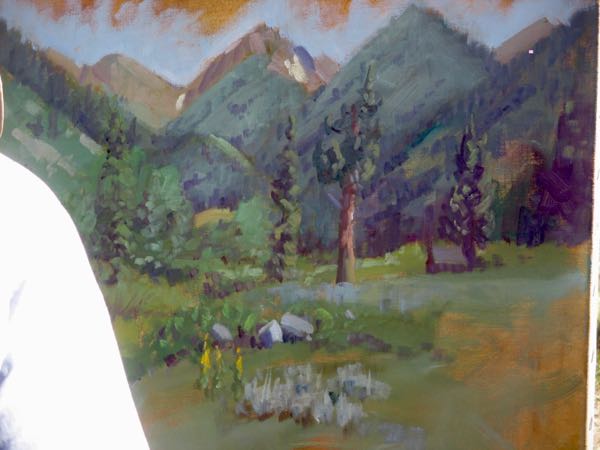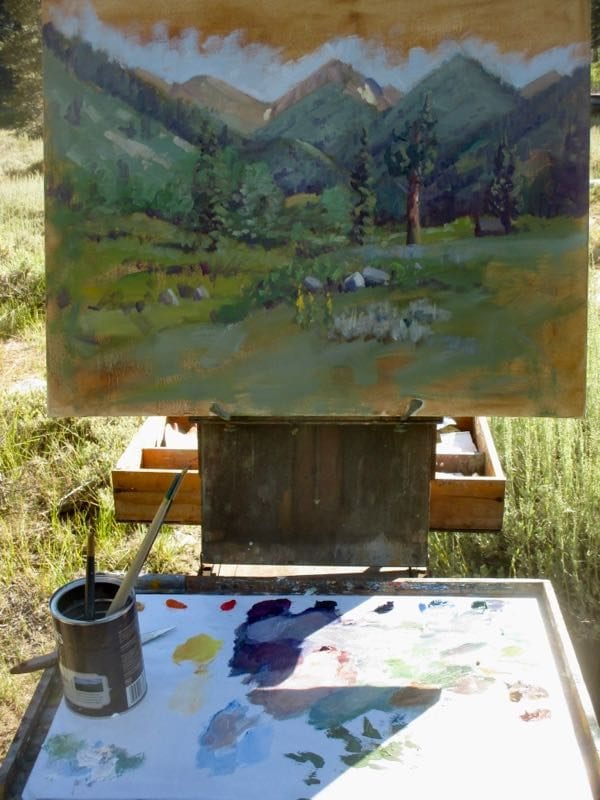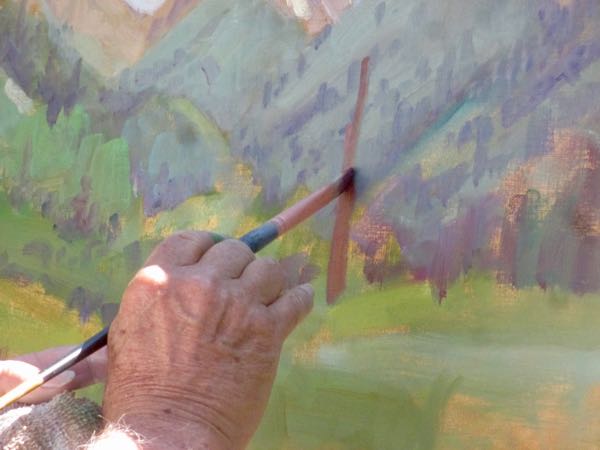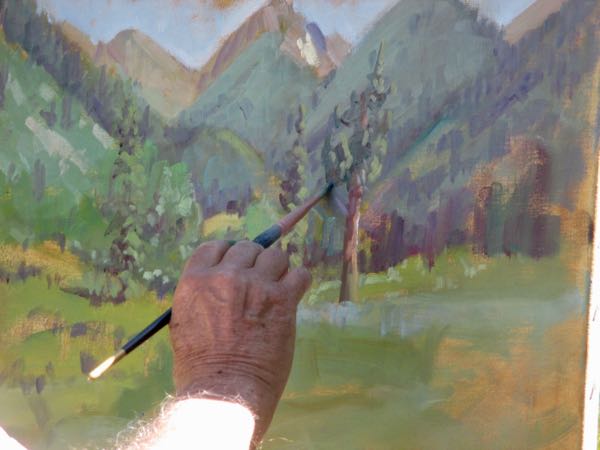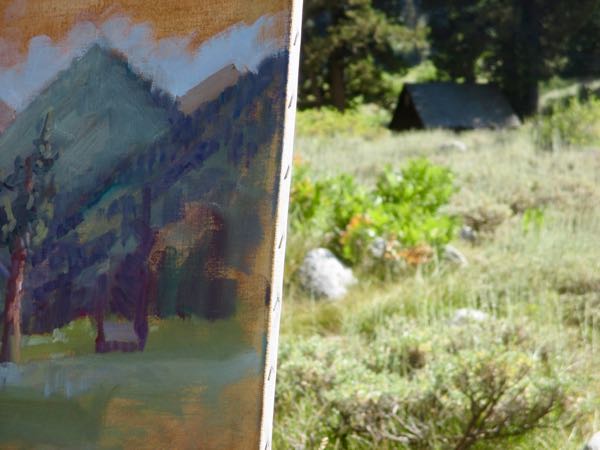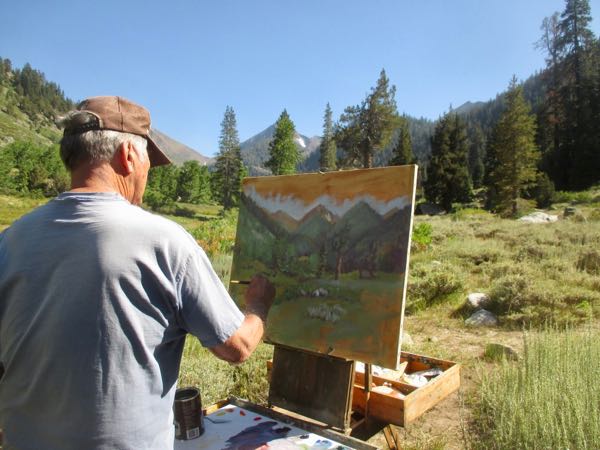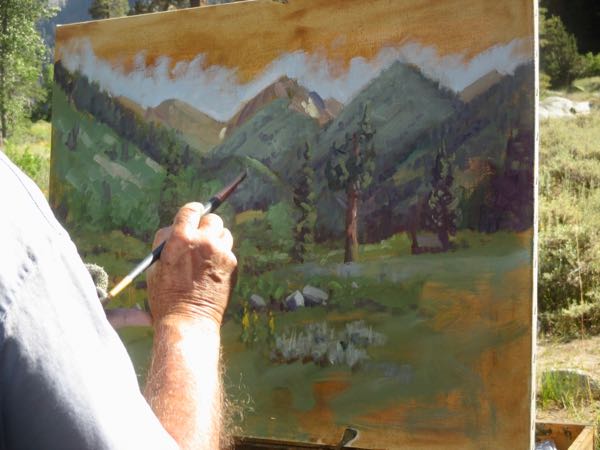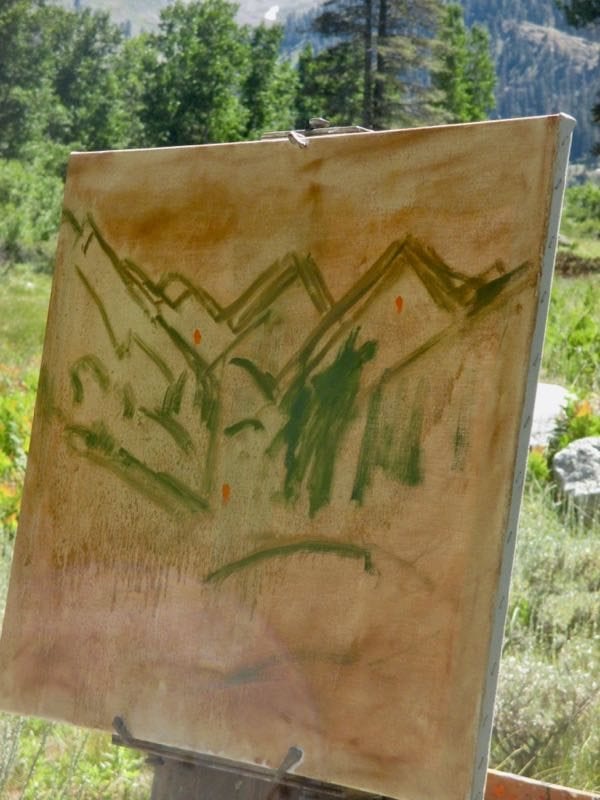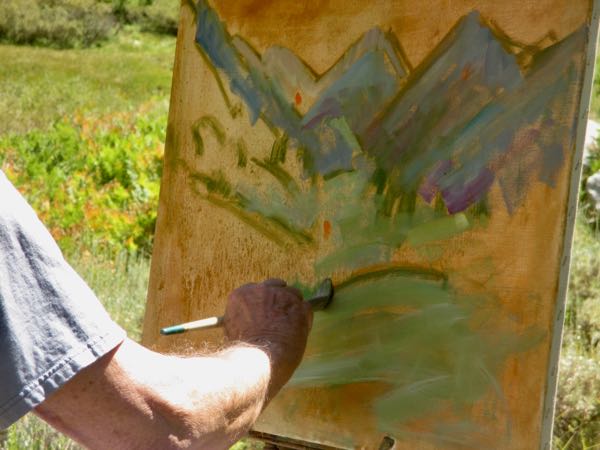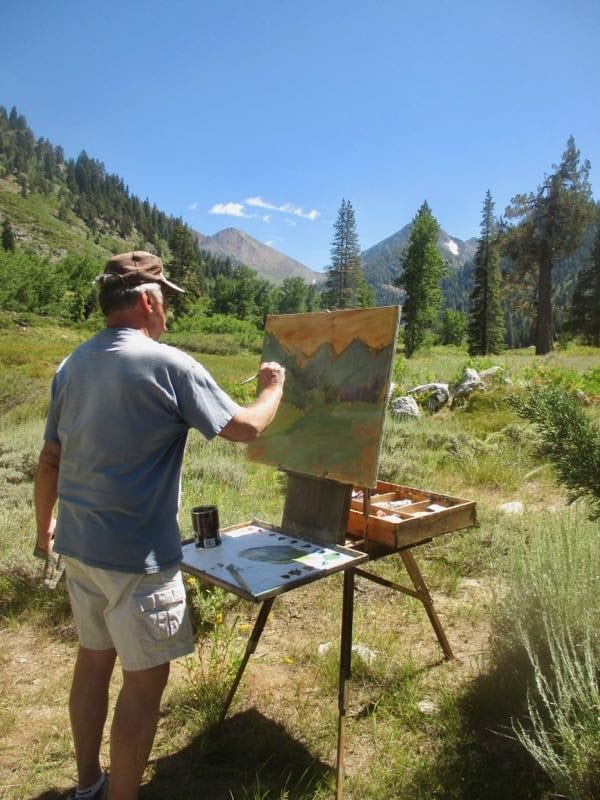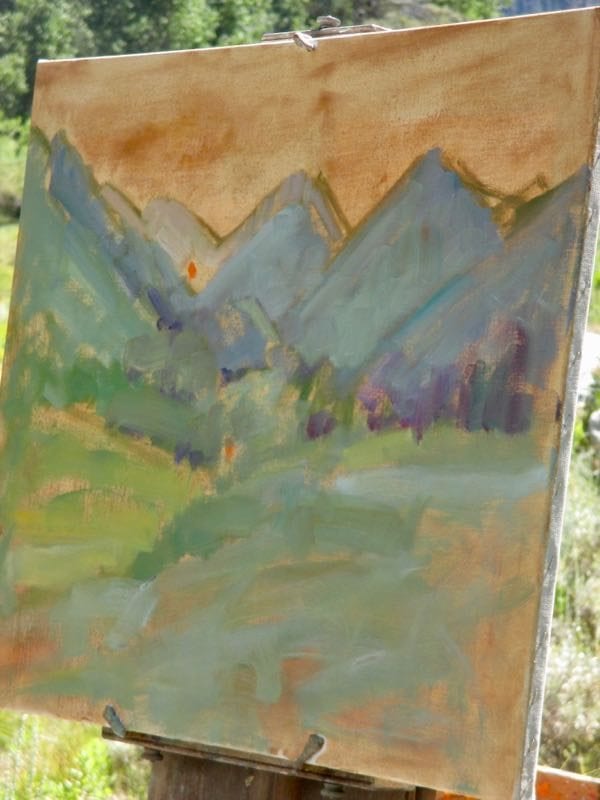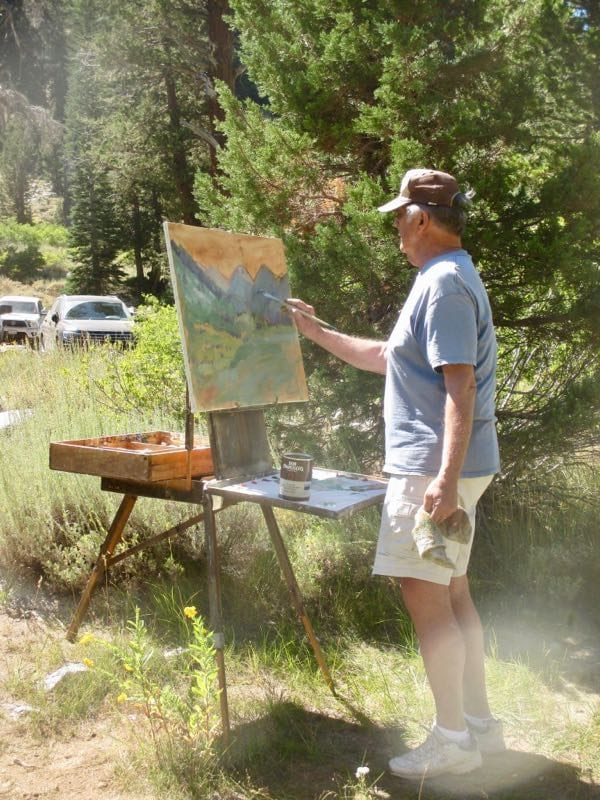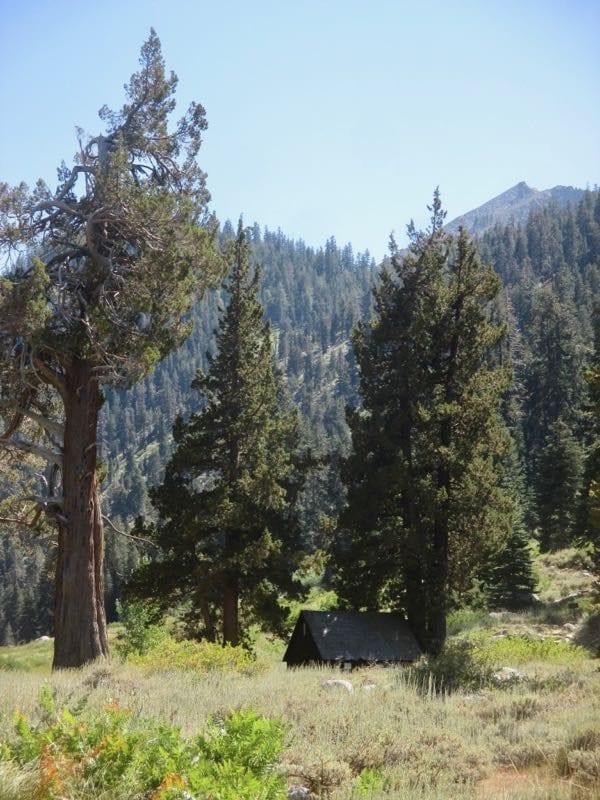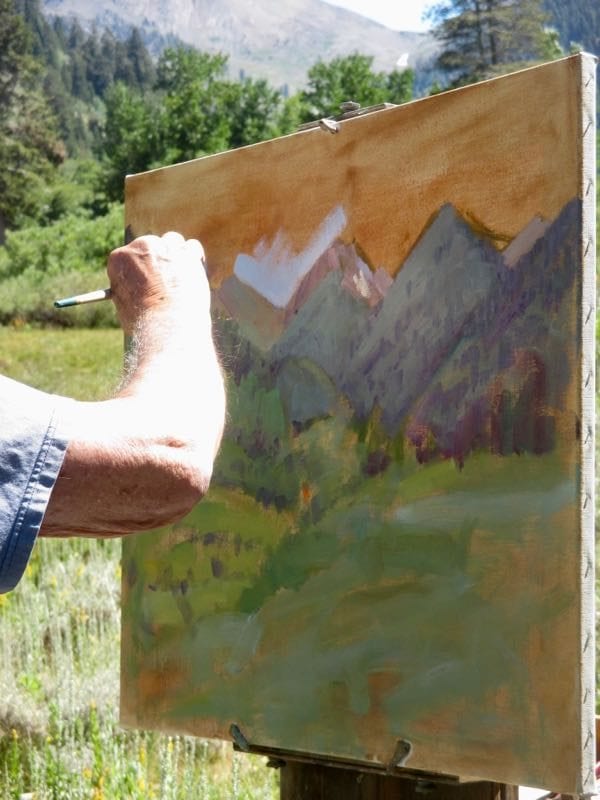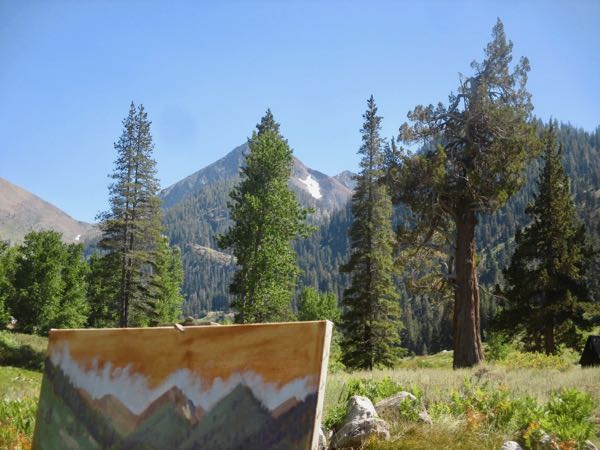If you can’t see the photos, go here: cabinart.net/blog. Sometimes I just live on the edge. In 2019 I took a plein air oil painting workshop, wanting to learn the skills of slamming out a painting before the light changed too much. It wasn’t easy for this studio artist who is used to a fixed environment, working from my own zillion photos. It wasn’t easy for this near-sighted artist who has fought to see clearly her entire life to enjoy painting loosey-goosey. Blurry on purpose?? Why would anyone do that?
Being somewhat adventurous with my art doesn’t come easily to me. However, I took a clipboard with a piece of good paper and my box of twelve (times two) colored pencils down to a spot along the creek in Mineral King.
First I photographed the scene so I would know what to do if/when the light changed or if it took too long and I needed to finish it in the studio. (Please, please, let me work in my studio, you mean bossy fake plein air artist!)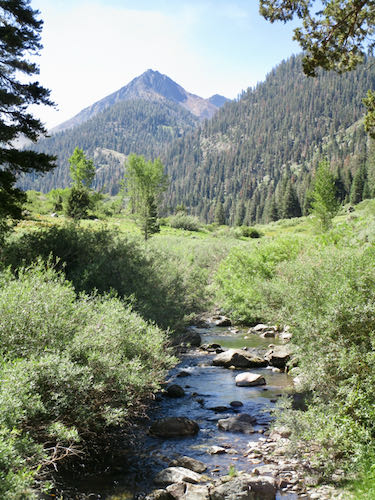
Then I began drawing, this time using Polychromos, because they don’t need sharpening as often as Prismacolor and they don’t break as easily. I chose brown for sketching, because the plein air oil painting teacher had us put our first layers down in a brown.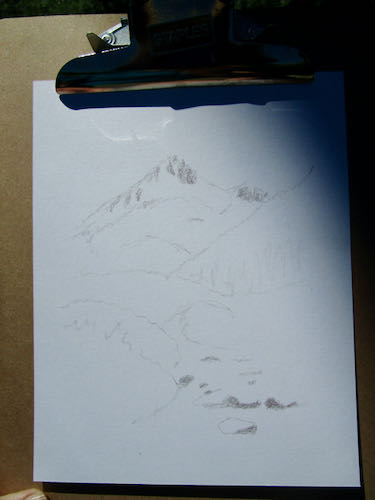
This is hard. Maybe I should just do the Honeymoon Cabin as it looks from this perch in the dirt.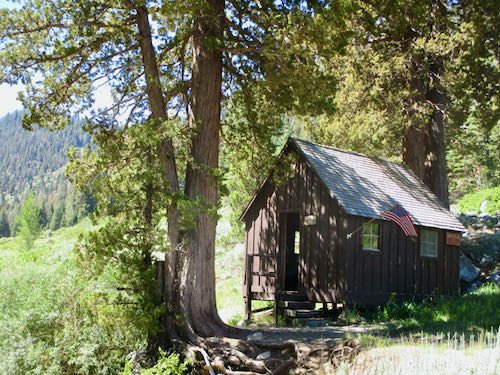
Never mind. Focus, Central California Artist!
Forget all that brown. I want to start coloring, because I know it will take umpty-umpt layers to even vaguely approximate the colors I see.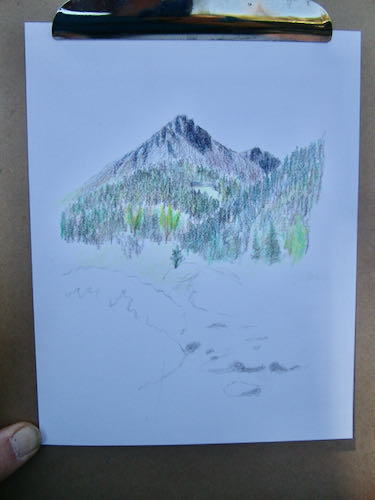
This is hard. These colors are inadequate. My hiney is sore from sitting on this dirt perch. Other people are hanging out together having fun.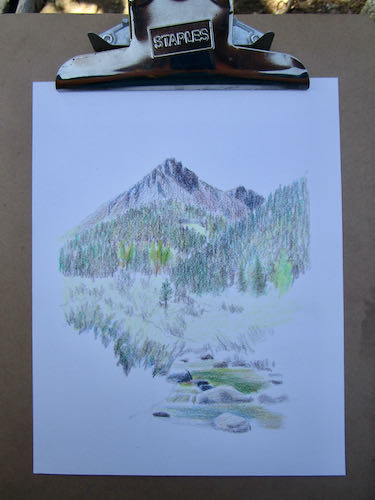
Why exactly am I doing this?
No good reason. Guess I’ll stop now and head back to the cabin.
Maybe I will finish this, and maybe I won’t. I have several paintings waiting to be done, and there will be payments when I am finished.
Sounds like an easy decision.
